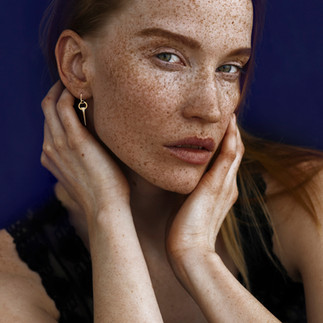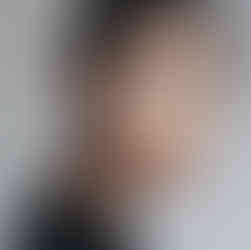Getting Your First TFP (Time for Prints) Photoshoot!
- Jossalyn Tori
- Jan 8, 2024
- 6 min read
You've set up your social media and have decided what kind of model you want to be but there's a problem. You have no portfolio pictures to show your talents! In this article, I will go over the basics of arranging a TFP photoshoot, but before we begin, be sure to check out the blog on MODEL SAFETY first to make sure you choose a photographer you can trust.
TFP means time for prints in short form. These kinds of shoots are a free collaboration with photographers, models, and sometimes hair and makeup stylists. In return for your time, you will receive photos from the shoot that you can use for your portfolio without having to pay. It's a great way to make connections and learn from the experience. So how does a model arrange one?
Finding a Photographer

First, you'll need to go photographer "shopping" and make connections through various forms of social media. I recommend Instagram as a starting place as you can see the photographer's newest works and learn more about them. You don't want to choose just the first photographer you see but research the kind of styles you want for your portfolio. Choosing a photographer who specializes in faraway landscapes when you need close-up studio beauty shots may not fit either of your needs. The photographer also should benefit from the photoshoot as well! To keep things simple, aim for a photographer who can give you some closeup beauty shots with natural makeup, hair, and clothes, and also some full-length pictures. It can be either indoor or outdoor photos. The key is to express your most natural self as a model. While having extreme hair, makeup, and clothing is also fantastic for social media, most clients want to see the blank canvas of your beauty so fewer extreme looks are better for your first set of photos.
Since there is such a wide range of photographers, I suggest reaching out to intermediate level as they will have the eye to capture you in good light and good angles while containing some editing skills to enhance your photos. Beginner photographers are okay to work with as well, but sometimes you'll walk away with not a single good photo in hand. Until you have a small portfolio developed, advanced photographers are more likely to work with you, so I'd save those until after your first or second photoshoot to prove that you are ready to deliver professional posing. So maybe now you're wondering how to tell the difference between a beginner and an intermediate photographer. Here are a few key tips.
Beginner Photographer:
Photos overexposed with light or having harsh shadows on the face.
Choosing unflattering photo angles of their models.
Has no consistent concept/theme for the photo shoot.
Takes the same type of photo each time with no various angles (always full body, always closeup, always straight on with no angles, aka the model moves and the photographer stands still the whole photoshoot).
Overly edited photos such as unnatural skin textures, too much color saturation, poorly photoshopped objects, pretty much anything the makes the photo look fake.
No contract or clarity of how the photos will be delivered (will you receive them all? Only a certain amount edited? Can they do editing, etc.)
Intermediate to Advanced Photographer:
Photos are clear, artistic, and deliver a professional appearance.
Can sometimes provide hair and makeup assistance.
Has a contract stating clearly their rules for the shoot and photo rights.
Has a concept/theme or idea of what they want for the photo shoot while also willing to accept your ideas too.
Plans more than one look for a photoshoot (2-3 looks is usual for a shoot day).
Has established social media accounts or has a portfolio to display their current works.
Editing skills are more natural or stylistic.
Still can't tell the difference? Here's an extreme example of a beginner photo taken from my camera without thought or using any skills or good lighting vs. a professional photo. I want you to observe these things:
Differences in lighting, the theme in mind, the angle of the photo.
The basic photo had no theme or wardrobe planning, the lighting too harsh on the forehead while not reaching my eyes, and the picture too far away and straight on.
The professional photo held the warm tones of beige and gold, lighting was flattering and soft, the angle slightly down and close so it feels warm and personal.
Arranging the TFP

Now that you've selected several photographers to reach out to them, and please contact only one at a time otherwise you'll have too many photoshoots to book, it's time to message them. Messaging etiquette is still highly important no matter what age they or you are. For the initial message, I recommend not using casual slang, no emojis or stamps, and treating the photographer nicely the entire time even if they are rude to you. Their personality may be rotten, but it can lead to a different connection. If they feel dangerous, disrespectful, or aggressive, politely back out of the situation if necessary. Here is a sample contact message to get started so feel free to adjust it to your writing style and model needs.
Dear (photographer's name),
My name is ______ and I'm a model currently based in (your location). I'm looking to developing my portfolio and after reviewing your works, I would love to work on a collaboration with you. If you're interested, would you like to arrange a TFP photoshoot? (*) I'd love to work with you, and I look forward to hearing from you and arranging the details of this shoot.
(your name)
(*) For this section you can add some of your ideas of what you're looking for in your portfolio. Feel free to describe a little bit such as close-up beauty shots, simple fashion portraits, studio setting, outdoor setting, etc. It's also a good idea to attach 2-5 reference photos to stir interest in the photographer's decision.
If you don't hear back from them within a week and they've read your message, consider contacting another photographer on your list. They may be busy or perhaps your look doesn't fit their portfolio for the time being. Out of all the photographers I contacted, about half never read the message, a few hit the like button, and only a couple responded. I wish they'd send a response out of etiquette, but unfortunately, not all have the same approach on business networking.
Sometimes if the photographer is asking you to do TFP in outfits or themes you're not comfortable with, here is a polite refusal message.
Dear (photographer's name),
Thank you for sending your request. As of now, I don't believe this style is what I'm looking for in my portfolio. If interested in the future, I'd love to reach out to you again. I wish you all the best in your career and I look forward to seeing more of your works!
(your name)
Always keep messages polite, simple, and to the point. People are busy and an extensive message isn't something they have time to read and a rude one is sure way to ruin opportunities.
Preparing the Details of the TFP

Now that the photographer has agreed, and the time and place is chosen, it's time to prepare yourself for the shoot.
Contract:
Be sure to have a model/photographer contract/release form ready to go and ask politely the photographer reviews it, makes adjustments, and both you have a signed copy. You want to protect yourself from anything that may happen during the shoot and I'm sure the photographer wants the full rights to their photos to use how they want. The few times I didn't have one I regretted it. One photographer refused to give me the photos, another only gave me a few unflattering ones that I couldn't use, another over edited the photos and I couldn't use them, and one requested I don't use any of the photos months after I published them, demanding I take them off my social media. As you can see, things can get really messy without a contract clearly stating the use of the photos. Having one will save you time and stress. In a future blog, I will provide a model/photographer contract that you can use!
Theme:
Next, you'll need to choose the clothes (and how many looks), makeup, and hair for the photoshoot. While the photographer may give you a general idea of what they want, since it is TFP, you too can push forward ideas of what you need for your portfolio. I wish I could tell you what to wear or how to style yourself for a TFP, but with the variety of ethnicities and the changing of fashions I can only guide you in saying, keep it natural. If everything is simple, the clients can see your true self in the photos instead of being buried behind makeup, dramatic clothes, and noisy backgrounds. Those are great too, but you'll need at least some natural shots in your portfolio. Here are some examples:
Have fun and don't expect perfection and lastly don't arrange too many TFP in a row. You only need a small collection of unique work to make connections, gain experience, and reach clients for paid shoots. As an experienced model, I only arrange two TFP per year if I'm looking for a certain type of style or photo. As models, we need to be paid, so be selective in who you do a TFP with.
In the next blog, I'll go over a complete checklist of what you need in order to prepare for your TFP, so don't forget to SUBSCRIBE so you don't miss out!
Photo Credits
Blog Article Photos and Cover Photo:
by Wix
Photo of me:
Jewelry @kagayoi_official
Photographer @masatoshiyamashiro
Styling @akira_noda_official
Makeup @nozaking42























Comments